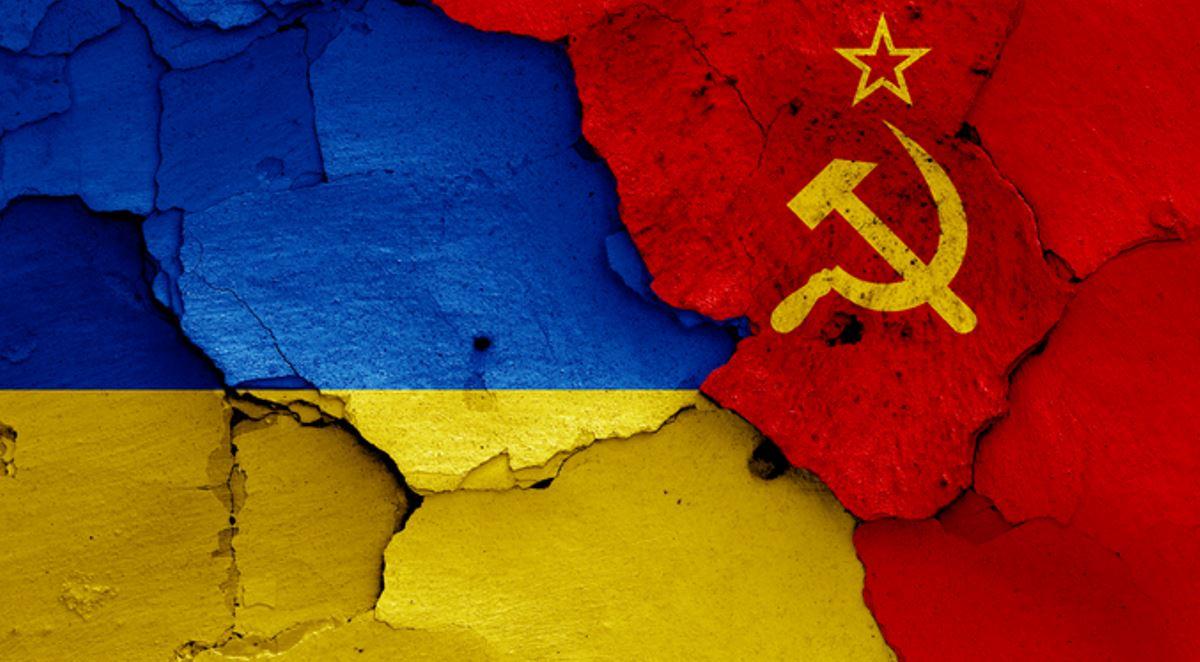
The US government today likes to pretend that it is the perennial champion of political independence for countries that were once behind the Iron Curtain. What is often forgotten, however, is that in the days following the fall of the Berlin Wall, Washington opposed independence for Soviet republics like Ukraine and the Baltic states.
In fact, the Bush administration openly supported Mikhail Gorbachev’s efforts to hold the Soviet Union together rather than allow the USSR to decentralize into smaller states. The US regime and its supporters in the press took the position that nationalism—not Soviet despotism—was the real problem for the people of Eastern Europe and the Caucasus.
Indeed, in the case of Ukraine, President George H. W. Bush even traveled to Kyiv in 1990 to lecture the Ukrainians about the dangers of seeking independence from Moscow, while decrying the supposed nationalist threat.
Today, nationalism is still a favorite bogeyman among Washington establishment mouthpieces. These outlets routinely opine on the dangers of French nationalism, Hungarian nationalism, and Russian nationalism. One often sees the term nationalism applied in ways designed to make the term distasteful, as in “white nationalism.”
When nationalism is convenient for NATO and its European freeloaders, on the other hand, we are told that nationalism is a force for good. Thus, the US regime and mainstream media generally pretend that Ukrainian nationalism—and even Ukrainian white nationalism—either don’t exit or are to be praised.
In 1991, however, the US had not yet decided that it paid to actively promote nationalism—so long as it is anti-Russian nationalism. Thus, in those days, we find the US regime siding with Moscow in efforts to stifle or discourage local nationalist efforts to break with the old Soviet state. The way it played out is an interesting case study in both Bush administration bumbling and in the US’s foreign policy that existed before the advent of unipolar American liberal hegemony.
The Anti-Nationalist Context
In the late 1980s, it was already apparent that the Soviet Union was beginning to lose its grip on many parts of the enormous polity that was the USSR. Restive nationalists within the Soviet Union were beginning to assert local control. For example, by 1989, ethnic Armenians and Azeris are already embroiled in the conflict over Nagorno-Karabakh that continues to this day. Deadly ethnic violence flared, but Moscow, in its weakened state, put off taking action. Yet, in January 1990, Moscow did act in what is know, in Azerbaijan today as “Black January.” Soviet tanks rolled into the Caspian Sea port city of Baku and killed as many as 150 Azeris—many of them civilians: “The ostensible aim of the intervention was to stop Azeri massacres of Armenians, but the real goal was to prevent the Azerbaijani Popular Front from taking power.”1 The Popular Front was the chief political arm of anti-Moscow nationalism in Azerbaijan, and its leader stated ”The goal is to drive out the army, liquidate the [Moscow-controlled] Azerbaijani Communist Party, establish a democratic parliament.”
Yet instead of Washington pundits instructing Americans to announce “I stand with Azerbaijan,” we were told the real threat was nationalism. As Doyle McManus wrote at The Los Angeles Times in 1990: “An ancient specter is haunting Europe: untamed nationalism … From Baku to Berlin, as the Soviet Bloc has disintegrated, ethnic conflicts that once seemed part of the past have suddenly returned to life.“ These old nationalistic impulses, one official from the State Department averred, are “dangerous ghosts” from Europe’s past. Arch-establishment foreign policy advisor Zbigniew Brzezinki was on hand to claim that ethnic tensions could lead to “geopolitical anarchy.” Bush administration officials were “worried” that smaller national groups might replace the Soviet Union. At the time, it was not uncommon to hear that nationalism in Europe would bring about a situation similar to that which supposedly caused World War I. As one “senior Bush advisor” said, “It’s 1914 all over again.”
So, when the Soviet tanks showed up to crush a potential coup that might free some Soviet subjects from Moscow’s yoke, the feeling in Washington was one of relief rather than dismay at Moscow’s aggression. Washington was clinging to the idea that the answer to nationalism was to ensure the continued exist of—as Murray Rothbard put it—”a single, overriding government agency with a monopoly force to settle disputes by coercion.” That agency was the USSR.
The US Against Independence for Ukraine and the Baltics
That was in early 1990. By late 1990, on the other hand, it was increasingly apparent that the Soviet state was in deep trouble and events were spiraling beyond the control of either Moscow or Washington. The situation in the Baltics was especially acute. On March 30, 1990, Lithuania declared independence and seceded from the Soviet Union. The Soviet state responded with a blockade. Latvia and Estonia began moving toward independence as well, although these two countries would not formally secede until late August 1991.
Yet, even in early August 1991, Washington under George H.W. Bush was still obsessed with the nationalist “threat.” In early 1990, the Soviets had claimed that Baltic independence was “a threat to European stability,” and this position, according to The Los Angeles Times, “has won considerable sympathy within the Bush Administration and in West European capitals.”
This preference for Moscow-coerced unity and “order” over nationalist decentralization was again on full display on August 1, 1991. This was when George Bush delivered his notorious “Chicken Kiev” speech. In this address to the Supreme Soviet of the Ukrainian USSR, Bush harangued the Ukrainians on the need to reject nationalism, stating
Yet freedom is not the same as independence. Americans will not support those who seek independence in order to replace a far-off tyranny with a local despotism. They will not aid those who promote a suicidal nationalism based upon ethnic hatred.
In other words, the nationalist bogeyman was invoked to hold the Soviet Union together. Bush’s finger wagging at the secessionists was received well by “moderate” pro-Moscow communists. But it was less well received by Ukrainian nationalists—to put it mildly—and Baltic secessionists were horrified as well. But few were waiting for approval from the Americans. Less than six months later all of the Baltics had seceded from the USSR, and a Ukrainian referendum on independence passed easily. (Lackluster support for secession continued in the Crimea and parts of eastern Ukraine.)
In delivering this speech, Bush was essentially acting as Gorbachev’s message boy, and Bush clearly supported Gorbachev’s “All-Union Treaty” which was supposed to create a new enlightened version of the Soviet Union that would replace the old USSR.
Yet if the Soviet Union was going to hold together, it was going to require the participation of the Ukrainians. That didn’t happen, and Foreign Affairs concluded in 1992 “it was Ukraine, led by President Leonid Kravchuk, that ultimately provoked the unraveling of the Soviet empire: Ukraine’s refusal to sign Mikhail Gorbachev’s union treaty precipitated the collapse of the U.S.S.R.”
Through most of it, the US had repeatedly warned against the dangers of secession and the threat of nationalism. Instead, the party line in Washington appeared to be that the old Soviet Union could be reformed into a new large state where democracy would keep the Lithuanians, the Ukrainians, the Azeris, the Armenians, and countless others in line. After all, from the point of view of Washington, the end of large state is not a rebirth of freedom, but an outbreak of “chaos” and “instability.” Thus, Moscow was treated as a far greater friend of Washington that secessionists in Kiev or Riga.
The panic over nationalism in the former USSR didn’t persist, however. Washington’s about face on all this came when Washington realized it could extend its “unipolar moment” by expanding NATO—in spite of the promise to not extend NATO eastward. But once it became clear that nationalism could be harnessed to serve the ends of NATO expansionists, then nationalism became a feature of “sovereignty” and the “rules-based order.” But as we’ve seen with the badmouthing of Polish and Hungarian efforts to control their borders or assert independence from Brussels, nationalism is intolerable whenever it inconveniences the European Commission or the White House.
1. Astrid S. Tuminez, “Nationalism, Ethnic Pressures, and the Breakup of the Soviet Union,” Journal of Cold War Studies 5, no. 4 (Fall 2003): 112.





